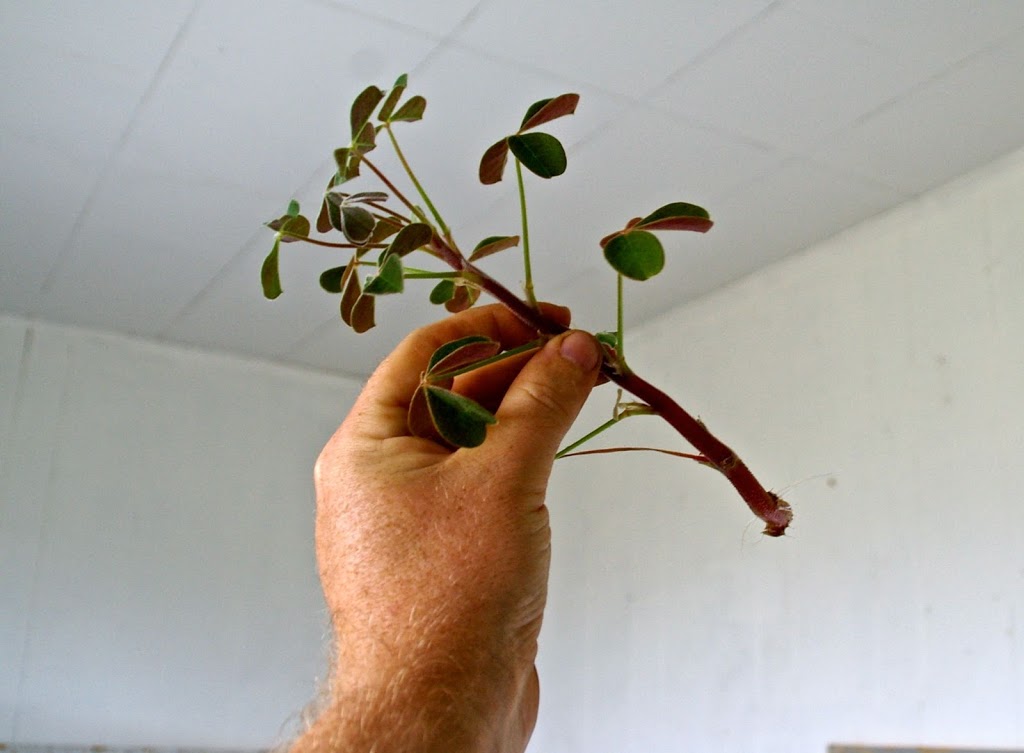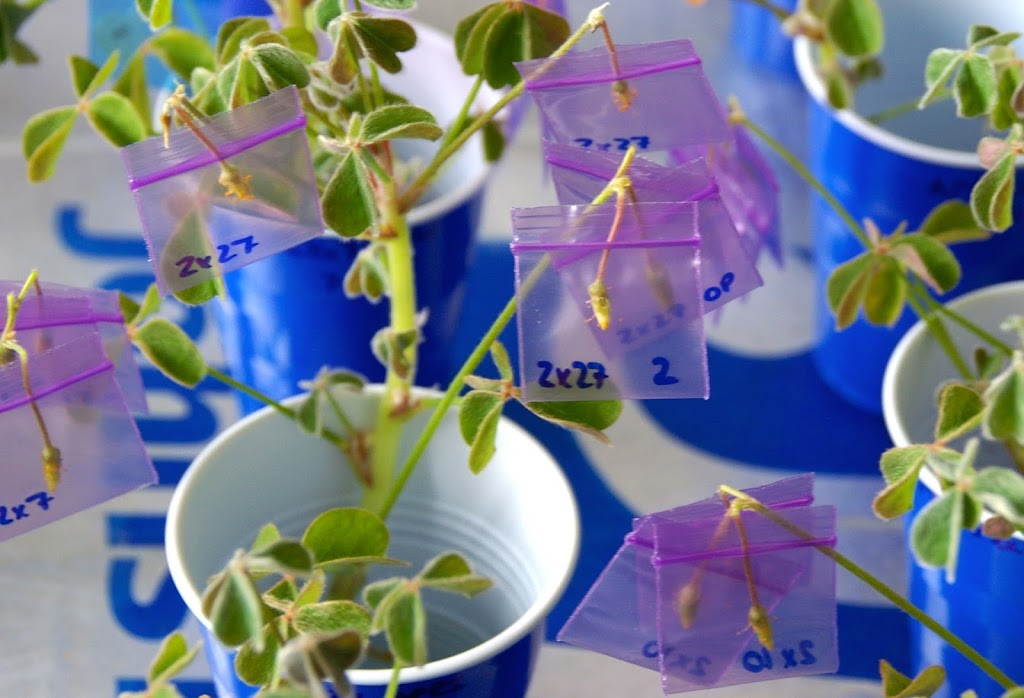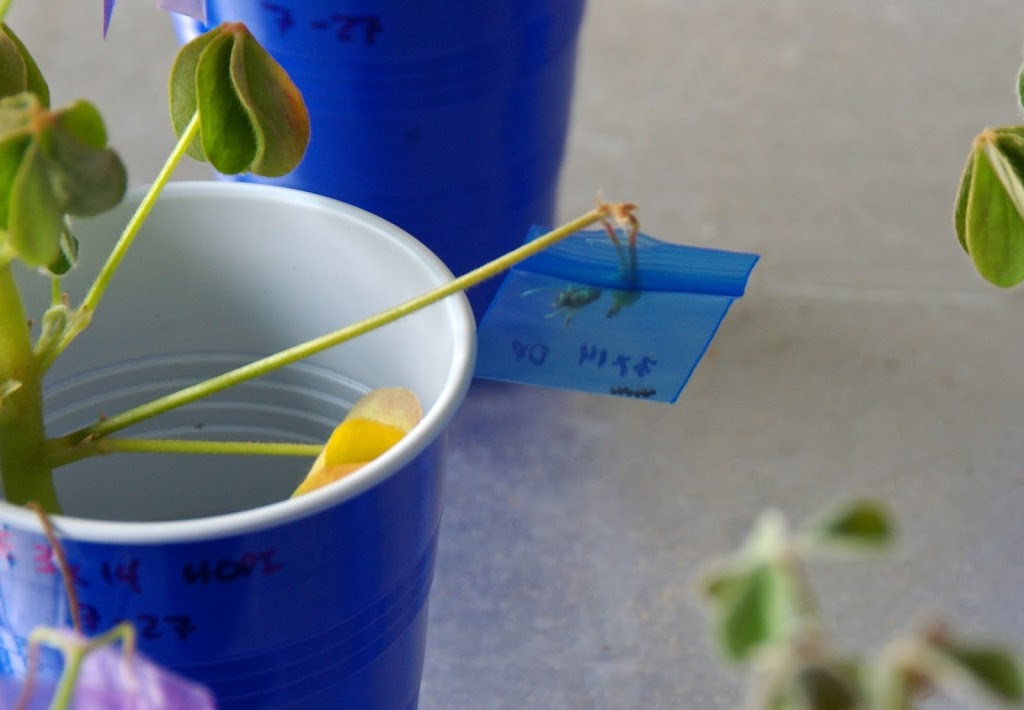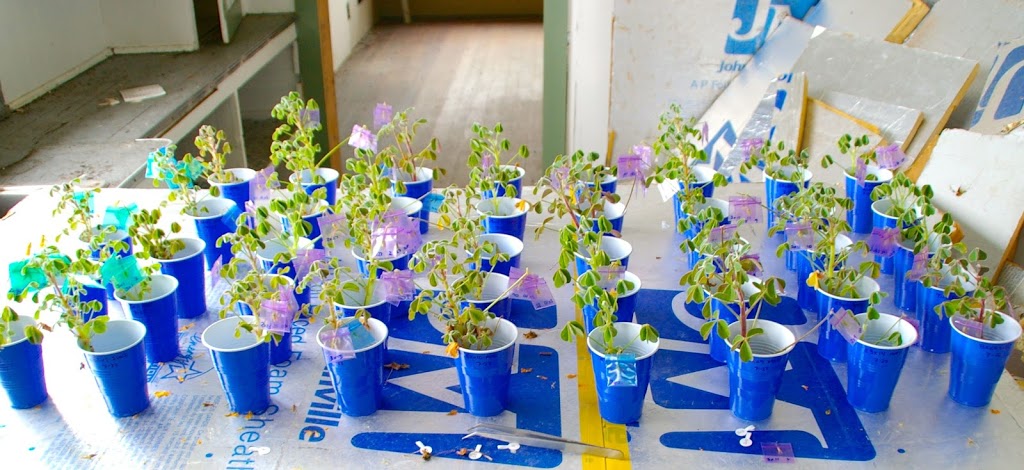Blog, breeding, oca (Oxalis tuberosa), true oca seed
Oca: Seeds from cuttings
 |
| Six to eight inch cuttings are just right |
I wrote a couple weeks ago that I was going to try a few experiments to determine how to harvest the most oca (Oxalis tuberosa) seeds with the lowest losses (the two kind of go hand in hand). The verdict is in: indoor cuttings have provided significantly better results than any attempt to increase yields outdoors. So, here is a primer on my method. There’s really nothing to it.
First, get yourself an oca cutting with some flower buds that are just about ready to open. A total length of six to eight inches works well for me. Strip the lower half of the stem of any leaves. (The picture is deceptive because this is a cutting that I’m done with and it has no more flower buds, but you get the idea.)
Put the cutting in a plastic cup or similar container with a couple inches of water in a relatively sunny spot. Mine are located in an unheated storage building with a window that has a southern exposure and that seems to work just fine. I was worried that they wouldn’t get enough light, but oca doesn’t seem to be too particular in that regard.
 |
| Bag those pods after a few days, but don’t wait too long |
Incidentally, if you enlarge the picture of the cutting, you may be able to make out that it has several new roots. Even while maturing seed pods, in low light conditions, after being cut from the parent plant, oca managed to root very nicely in just a couple of weeks. As a result, I am planting out my cuttings when I am done with them; I may get additional tubers as a side benefit.
Now, all that you have to do is wait for the flowers to open so that you can make your crosses. Oca flower stems are pretty fragile and break easily in wind, so keeping them indoors helps a lot. You can see from the next photo that I bag the seed pods. I don’t do this until at least three days after making the cross, because this limits losses due to the weight of the bag. After three days, the pedicels are not so fragile. Don’t wait too long, because you may be surprised by how much faster those pods mature indoors. With oca seed, procrastination may result in defenestration.
A six to eight inch cutting seems to be able to support at least 10 seed pods in my experience, so look for cuttings that have plenty of flower buds. I’ve had cuttings that continued to flower for two weeks, so they don’t appear to suffer any significant setback. I’ve really been surprised at how few pods are dropped indoors. Currently, only 2 out of 125 have dropped, which is a huge improvement.
 |
| Oca seeds in the bottom of a catch bag |
If you have made a good cross, it won’t be long until your catch bags magically fill with seeds. In fact, it will probably be a lot sooner than you expect. So far, it takes an average of 27 days for seed pods to mature outdoors here, while the indoor time to maturation is about 16 days. I’m not sure what to attribute this difference to, as the temperature in our storage building is not a lot different than outdoors, but it probably is just a little bit warmer overall.
This is the technique that I am using now for all hand crosses. I’m still collecting insect pollinated pods outdoors, but the odds of maturing a pod are so much greater from an indoor cutting that it just doesn’t make sense to mess around with outdoor crosses – particularly with varieties that don’t flower well. It is really nice not to have to tally the losses every morning like I did outdoors, where I lost four pods for every one that matured.
If you want to reliably mature oca seed, I really think this is the best way to do it.
 |
| 119 bagged pods, which should yield approximately 888 seeds |
Oca seeds and tubers are sometimes available in our seed shop.

3 thoughts on “Oca: Seeds from cuttings”
Comments are closed.